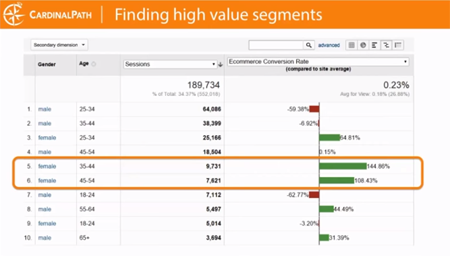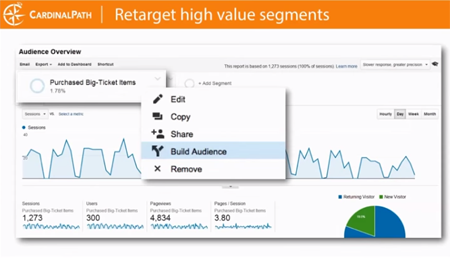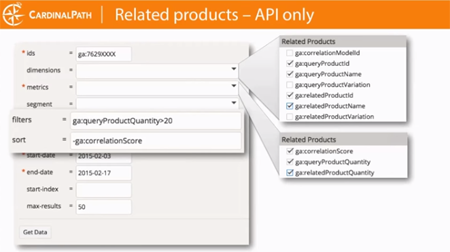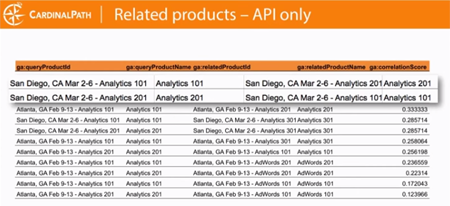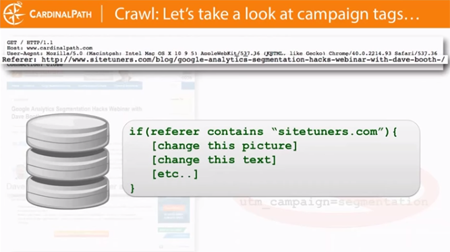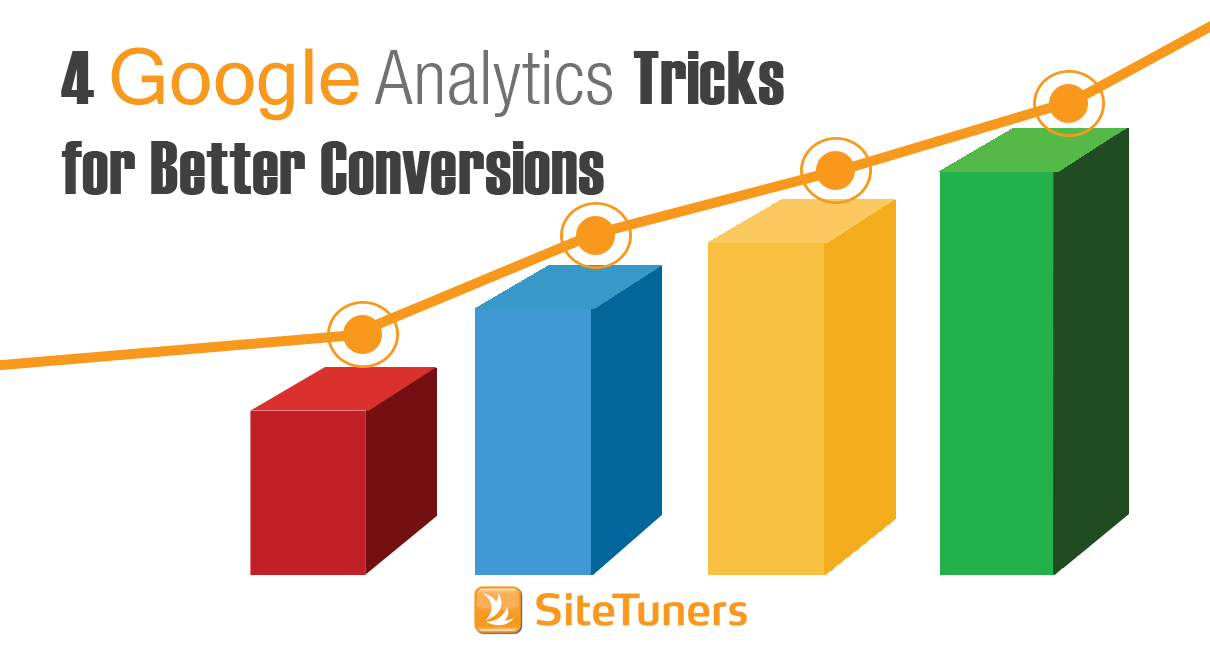
And part of that’s true: Google Analytics is great at tracking and making decisions about site traffic. But it’s also so much more than that – and as Dave Booth of Cardinal Path tackles in a webinar with SiteTuners, you can make your site convert better using GA. Whether you need to build remarketing lists for high value segments, track which products convert better when sold together, or start to personalize your site, Google Analytics is a pretty useful tool – if you’re willing to do a little more work to get the data.
The full GA webinar is worth a listen, but if you’re looking for the highlights, read on.
1. Maximizing Segments
One of the first things you’d want to learn once you’ve started using GA is creating effective Advanced Segments. Segments essentially slice your data into useful buckets.
Averages don’t really mean anything for data analysis, but you’d start to be able to observe meaningful patterns that you can act on once you start reviewing groups like these:
- people who use smart phones
- your loyal customers
- users who came from paid ads
- visitors who live in Ohio
- people who have never been to the site
If you have enabled demographics data within Google, you can take this a step further – you can, for instance, view age and gender together:
Once you know that you convert quite a bit more for a product line for females between 35 and 44 years old, you can do all kinds of interesting things, including building retargeting lists specifically for that group, then using that group for AdWords.
2. Remarketing to Useful Segments
For those who are new to creating retargeting lists, the core idea is that your ads will not go to everyone. For AdWords, anyone who types in a particular set of keywords will usually see your ads – unless you’ve created conditions for groups, like “females between 35 and 44 years old,” as noted above. That will ensure that your ads will be seen by a group of people who are more likely to convert.
It’s not just demographics data you can use to build remarketing lists for.
For instance, you can target people who purchase big-ticket items. The exact value will differ from site to site, but let’s just say anyone who spends 200 dollars is worth observing for a particular eCommerce site. You can then create a segment for Revenue, per session, add that the condition is Greater Than or >, and add a value of 200.
Once you have the segment created, you can build a remarketing list by selecting the segment, then clicking on Build Audience.
The actual setup is easy, painless, and fast – figuring out which remarketing lists boost conversion, well, that takes a bit more time.
3. Figuring Out Which Products Go Well Together
This is one of the more advanced things you can do with Google Analytics: use the API to pull data about which products convert well together. To get started, you need to use Google Query Explorer, then login with your Google account.
Once there, there’s a bit of technical work to get through. (see the image below for reference)
- Under dimensions, check the boxes for product ID, product name, related product ID, and related product name
- Under metrics, check the boxes for correlation score, product quantity, and related product quantity
- Under filters, use ga:queryProductQuantity>20 (or whatever your desired value is)
- Under sort, use ga:correlationScore
What this should leave you with is a table showing which of your products have the highest chances of converting together:
Armed with that information, you can change a range of things:
- the web site itself, so that the two items are featured prominently with each other
- banners for the related product when the core product is being viewed
- emails that promote the related product when users have bought the core product
- remarketing lists for AdWords or display campaigns for the related product, when the core product has been purchased
4. Personalization
With some help from developers, you can use either Google Analytics campaign tags or referrer information in the header for some quick personalization wins.
For those who are unfamiliar with campaigns, those are the strings at the end of a URL that specify things like the source of the traffic, the medium that the traffic is coming from, and the campaign name. You’ll recognize them by observing the URL patterns: they start off with ?utm and then branch off to identify attributes of a campaign.
But on top of using the campaign strings to help Google Analytics segment your campaigns, you can also get your developers to intercept the page, and make some modifications to it. For instance, you can change the image and the call to action for just the group of people who are coming in to your site using the campaign string. Or, if you want, you can modify the content based on the referrer:
Dave’s example of this is anyone coming in to Cardinal Path’s web site coming from the SiteTuners blog about Google Analytics segments. Because they know what the users are interested in, they can change the content and the Call to Action to something more suited for the visitors:
And that’s at the most basic level – once you and your developers get more comfortable with personalization, you can do more things, like customize a page based on on-site search queries, or their level of membership with your site.
Converting Better With Google Analytics
Despite the fact that Google Analytics is free, (with a choice to upgrade to Premium for a cost) it’s actually one of the most flexible, powerful, and actionable tools in the market. All that power and flexibility is going to waste, though, if you are just using it for traffic monitoring.
It helps quite a bit if you learn segmentation, remarketing, product correlation, and personalization – but of course, it doesn’t stop there. Once you have the useful data, there’s still the actual rolling up your sleeves and changing your site.
If your team needs help with that phase, you know where to start looking.
